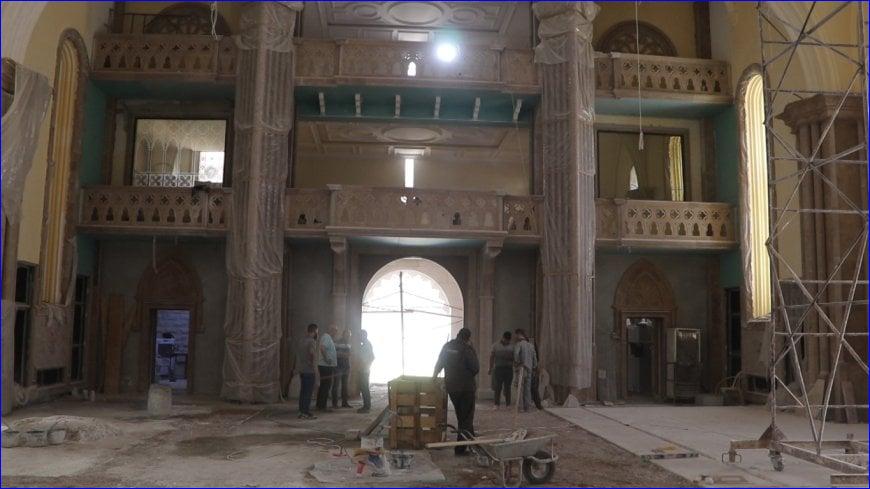


Collective Memory After the Nakba
St. George's Cathedral was established in the early 20th century, as thousands of Syriac Christians escaped the "Sayfo Massacres" the Ottoman Empire committed against them in 1915 and settled in al-Hasakah city. The church has developed over time as a religious and social center that brings together members of society and represents their identity.
Mar Maurice Amsih, Bishop of the Diocese of al-Jazira and Euphrates, said in an exclusive interview with ANHA's agency: "After massacres of Sayfo and immigrations of our nation into Syria, we constructed this cathedral that turned out to be the biggest church in the Middle East. After all the wars the region had been going through, and with the devastating destruction of religious monuments, we have never abandoned our church. We started restoring it three years ago because we believe attachment to the land is life itself."
Restoration Restores Hope and Identity
The restoration in process today encompasses the infrastructure, towers, and interior furnishings, with every effort being made to maintain the original Syriac architectural integrity that blends Byzantine and Eastern art, in a setting that replicates ancient spiritual rituals.
Bishop Amsih stressed, "We are rebuilding the church, but actually, we are restoring the spirit, renewing hope, and affirming our presence in our land. It is a message to all those who left, to return and participate in rebuilding the homeland and identity."
A Cultural Landmark for All Syrians
The Cathedral of St. George covers an area of 950 square meters and includes a main hall that can accommodate more than 1,200 worshippers. It also houses the seat of the Bishop of the Diocese of al-Jazira and the Euphrates, which includes the areas of Hasakah, Deir ez-Zor, and parts of the Euphrates.
Bishop Amsih clarified, "This church is not just a symbol of Christians but symbolizes a common cultural and human legacy for all island communities. Upon completion of the restoration work, we will conduct a spiritual wedding in front of His Holiness Patriarch Mor Ignatius Aphrem II, Syriac Orthodox Patriarch of Antioch and All the East."
The Cathedral of Life After Pain
Despite the destruction it suffered as a result of ISIS/ Daesh mercenary attacks in the city of al-Hasakah, St. George's Cathedral rises today from the rubble of war as a symbol of steadfastness. Through it, the Syriac Orthodox affirm that faith in and belonging to the land is stronger than all storms, and that restoring the stones is a prelude to healing souls and reviving spiritual life in cities exhausted by absence.

or register to post a comment.